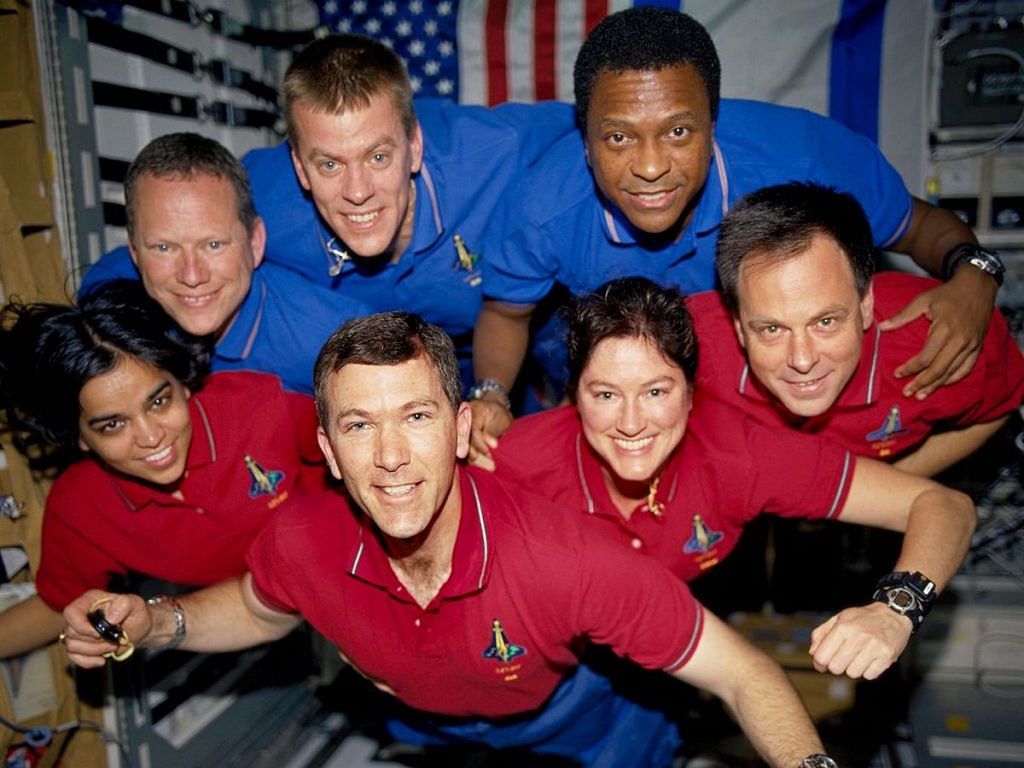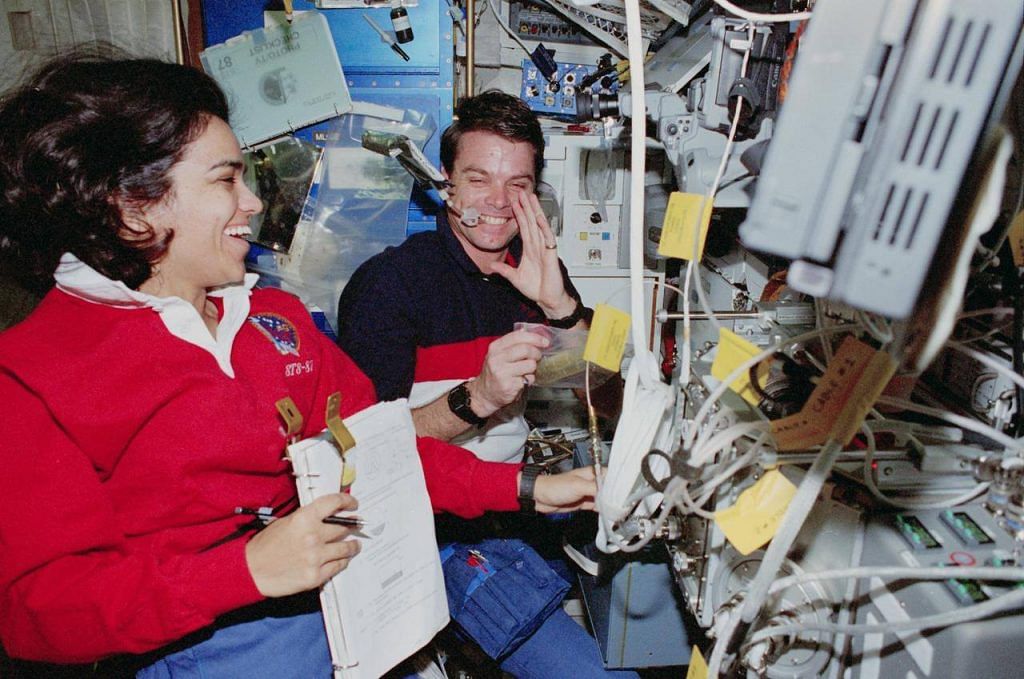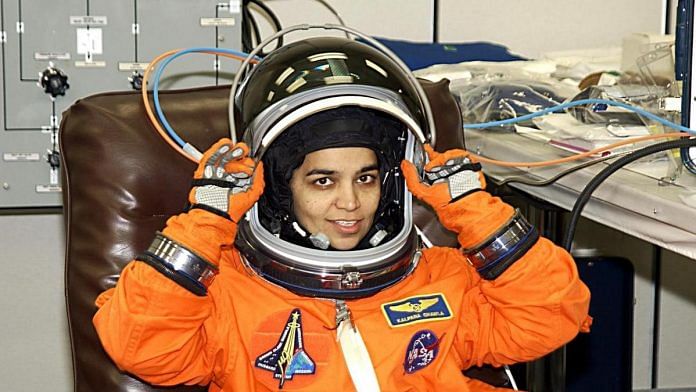Bengaluru: Floating in space has a way of sparking epiphanies. For astronaut Rakesh Sharma, gazing down at India from above triggered the patriotic sentiment of “Saare jahan se achha“, followed by the realisation that “the whole planet is one”. For Kalpana Chawla, the first Indian-born female astronaut, speaking in a 1998 interview, it was the understanding that suspended in the vastness of the universe “you are just your intelligence”.
Five years after that interview, on 1 February 2003, Chawla and six fellow astronauts were just 16 minutes away from landing on Earth after 15 days in space. Then, at an altitude of 200,000 feet, Space Shuttle Columbia disintegrated into little bits, its fragments streaking like comets across the Texas sky. All the astronauts aboard were lost forever in that tragic quasi-celestial display.
But if after death, you are just your legacy, then Chawla, only 40 when she died, has left a wealth. She remains a fixture on lists of the most inspiring Indian women and is held up as an example for young minds to shoot for the stars.
Born in Karnal, Haryana, she lived up to her name ‘Kalpana’, which means ‘imagination’, right from her childhood. Boundaries and borders held no sway over her. Driven by her talent and ambition, she moved to the US at 20 and, in 1997, made history as part of the Columbia STS-87 mission, completing 252 orbits around Earth. This feat propelled her to national hero status in India, with one news agency reportedly tracking the mission minute-by-minute so Indians could wave to her as the shuttle passed overhead.
“She didn’t let adulatory press reports get to her head after her first flight,” recalled her sister-in-law and childhood friend, Anjali Chawla. “She told the family back in India to enjoy all the attention so she could focus on her work.”
Chawla is remembered worldwide for her immense contribution to the space and astronaut community, but her name also evokes one of the worst incidents to have ever occurred in the history of space flight.
Also Read: Remembering a Haryana girl who made Hindi Medium Type cool by becoming a heroic astronaut
The final flight
In 2000, NASA astronaut Chawla was chosen as a mission specialist for a flight on Space Shuttle Columbia. This wouldn’t be her first adventure on it—she had soared into space aboard it in 1997, becoming the first Indian woman to conquer the final frontier.
While that ride had been relatively smooth, her second Columbia flight, STS-107, encountered numerous delays and technical issues before finally lifting off on 16 January 2003.
The mission itself was a scientific success, with Chawla and her six crewmates performing over 75 experiments in 15 days during the course of projects such as studying plant reproduction and prostate cancer cells in microgravity. But tragedy lurked.
Unknown to the crew, a piece of foam insulation had broken off from the space shuttle’s tank during launch, striking and damaging the orbiter’s wing. During re-entry, super-heated gases penetrated the wing structure and entered the airframe, causing Columbia to break apart over Texas, USA.

If citizens halfway across the globe hadn’t heard of Kalpana Chawla until then, they certainly did in February 2003.
The Columbia disaster shocked the entire international scientific community, and Chawla’s death was mourned deeply in her home country.
“She often used to say that the word ‘fear’ was not present in her dictionary,” said Anjali.
Always preparing for flight
The youngest of four siblings, Chawla was born on 17 March 1962 in the small town of Karnal in Haryana. She was reportedly known only as ‘Montu’ until she reached school age after which she chose her own name.
Right from early childhood, she was deeply fascinated by airplanes, regularly attending flying shows and clubs. Indeed, her father, who has since passed away, said in an interview that teachers would point out that young Kalpana seemed more interested in making paper airplanes in her free time than anything else.
When the time came for further studies, though, Chawla encountered some disappointment at first. She did not get admitted into IIT Delhi, where she tried for both mechanical and chemical engineering, said Anjali. Then, Punjab Engineering College offered her a seat, but since aeronautics had no female students, she was encouraged to join other courses. But she was adamant and stuck to her decision. Very soon, the gender divide did not matter.
“Kalpana was always social and fond of people. As soon as she joined college, she started getting all the boys together and screening rented flying movies for them on a VCR,” said Anjali. “She always ensured every person around her got her individual attention and love. Even when she called home from the US in the 80s, she would rotate and take turns calling every member of the family.”

Chawla’s thirst for knowledge did not end after her bachelor’s degree. In 1982, she moved to the US, where she earned a master’s degree in aerospace engineering from the University of Texas at Arlington in 1984. She then moved to the University of Colorado Boulder, where she earned another master’s degree, followed by a PhD in aerospace engineering in 1988.
But she was not limited to the realm of the theoretical. Before reaching outer space, Chawla conquered the skies in planes and gliders, having certified as a flight instructor and even holding commercial licences for piloting different kinds of planes.
Promptly after her PhD, Chawla joined NASA’s Ames Research Center, where her work centred on fluid dynamics, specifically focusing on vertical take-off and landing (VTOL) technologies.
When she became a naturalised US citizen in 1991, one of the first things she did was to apply for the NASA Astronaut Corps.
Chawla’s extensive work in space and aerospace was her strength; she entered the corps in 1995, and two years later, was ready for her first flight. While some glitches did mar that outing, NASA absolved her of any responsibility, with the organisation’s chief reportedly calling her “a terrific astronaut”.
Anjali pointed out, however, that there were many other facets to her friend, including a propensity for childlike enthusiasm and a passion for the arts. She recounted how a young Chawla was fond of collectibles, building miniature scenes with toys that came with the toothpaste Binaca, and enjoyed making paintings of the stars. She also learned Bharatnatyam, culminating in an “arangetram” debut performance in Sunnyvale before applying for the astronaut programme.
Also Read: Sriharikota, we have a problem. The ground is eroding
A name that lives on even in space
Kalpana Chawla was an inspiration to many during her lifetime, but her death further magnified her impact, particularly on an entire generation of millennials. Four days after her demise, then-Prime Minister of India, Atal Bihari Vajpayee, announced that the newly built MetSat series of weather and meteorological satellites would be renamed as a tribute to her. MetSat-1, launched the previous year, became Kalpana-1.
Chawla’s legacy is also memorialised in the reaches of space. A lunar crater and an asteroid (51826 Kalpana Chawla) have been named after her. Additionally, a series of peaks on Mars, called Columbia Hills, bear the names of Kalpana Chawla and her fellow crew members.
In the US, several buildings and programmes honour her memory. The Florida Institute of Technology, along with Chawla’s alma mater, the University of Texas at Arlington have student dormitories named after her. New York boasts a road called Kalpana Chawla Way. The France-based International Space University has also established the Kalpana Chawla Scholarship specifically for Indian women.
Anjali, however, said that Chawla was not celebrated enough in India during her lifetime, receiving more accolades in countries like Ukraine and Japan where she and other crew members were invited after their successful spaceflight. But things are very different today.
Tributes similar to those in the US abound in India. Other than various streets across the country, a planetarium in Kurukshetra, Haryana, bears her name, while IIT Kharagpur named its Space Technology Cell after her. Haryana has the Kalpana Chawla Government Medical College, while a dormitory at the Punjab Engineering College is dedicated to her memory. Numerous engineering colleges across the country have student wings named after the astronaut and the Karnataka government has established an award for young women scientists in her name.
Today, Kalpana Chawla’s influence remains potent for young girls and women, especially in India. She left behind her a giant endowment of interest in astronomy and space globally.
“One of her favourite sayings was ‘reach for the stars’, and it was something she often wrote when she was asked for an autograph,” remembered Anjali. “She absolutely loved children, and today, this is exactly what she would tell all the young people who are inspired by her.”
(Edited by Asavari Singh)



